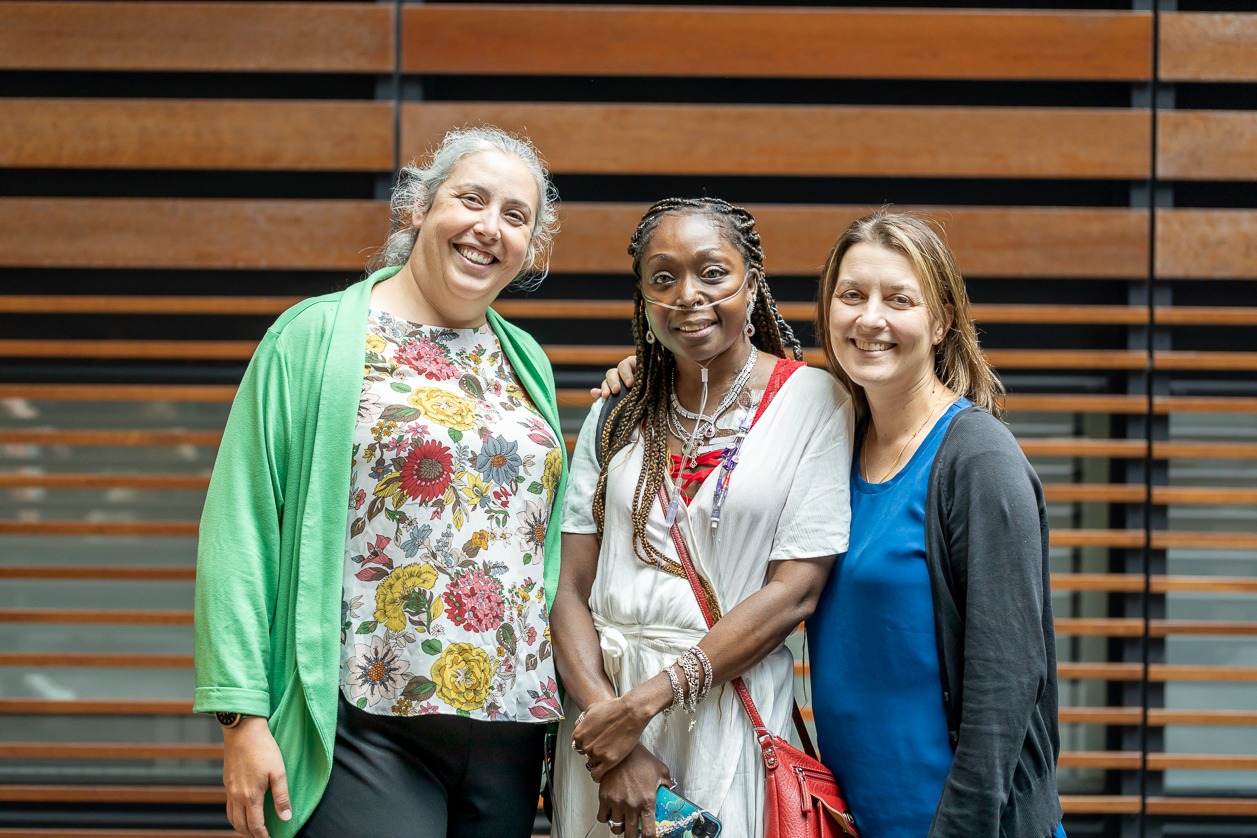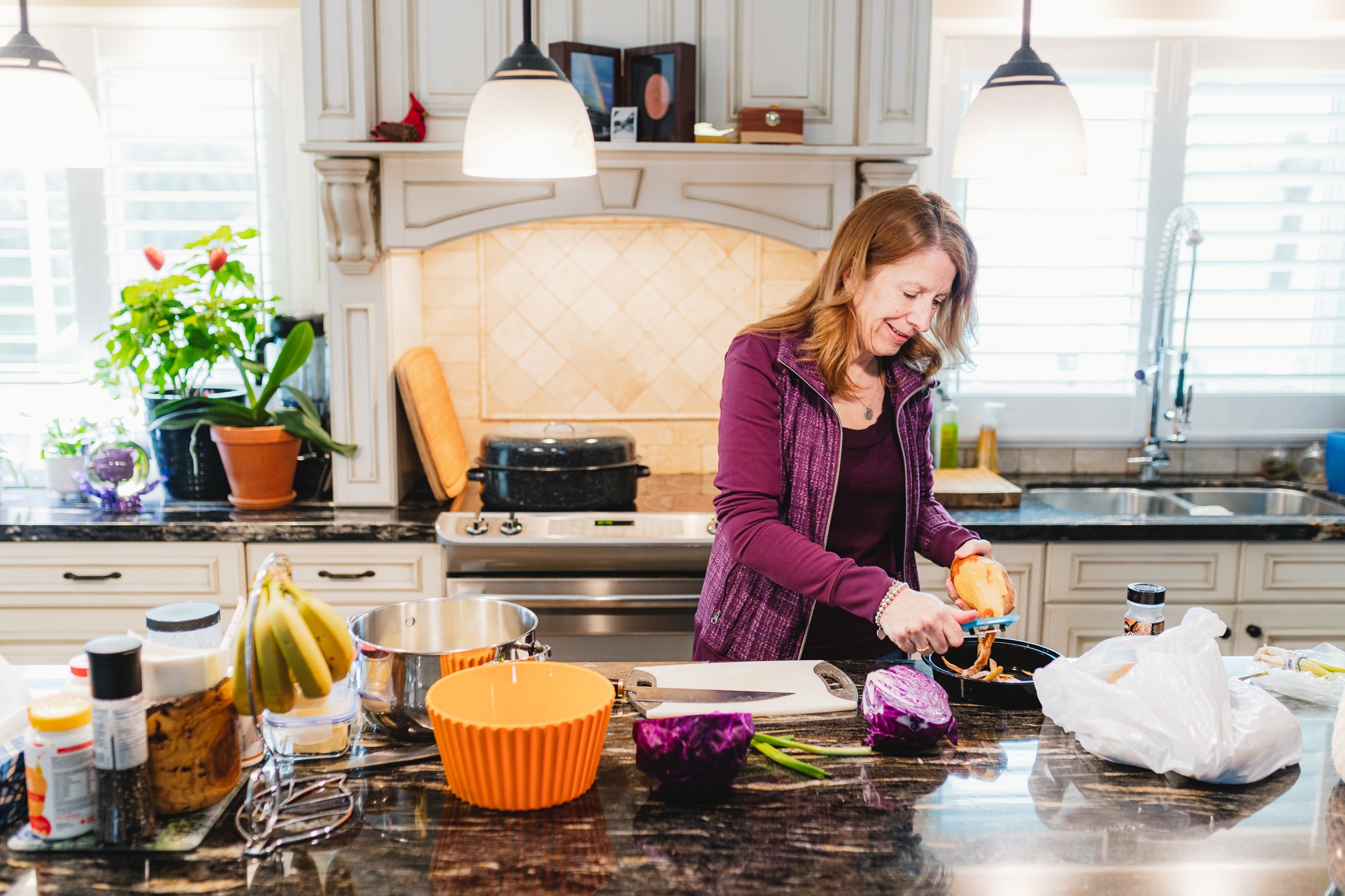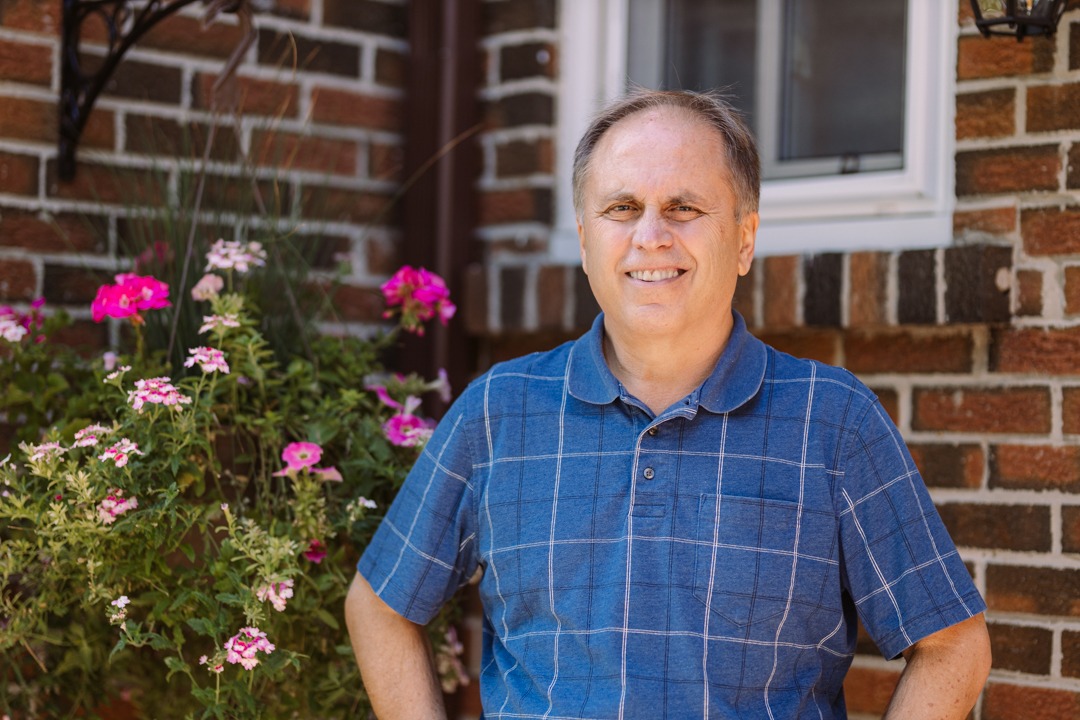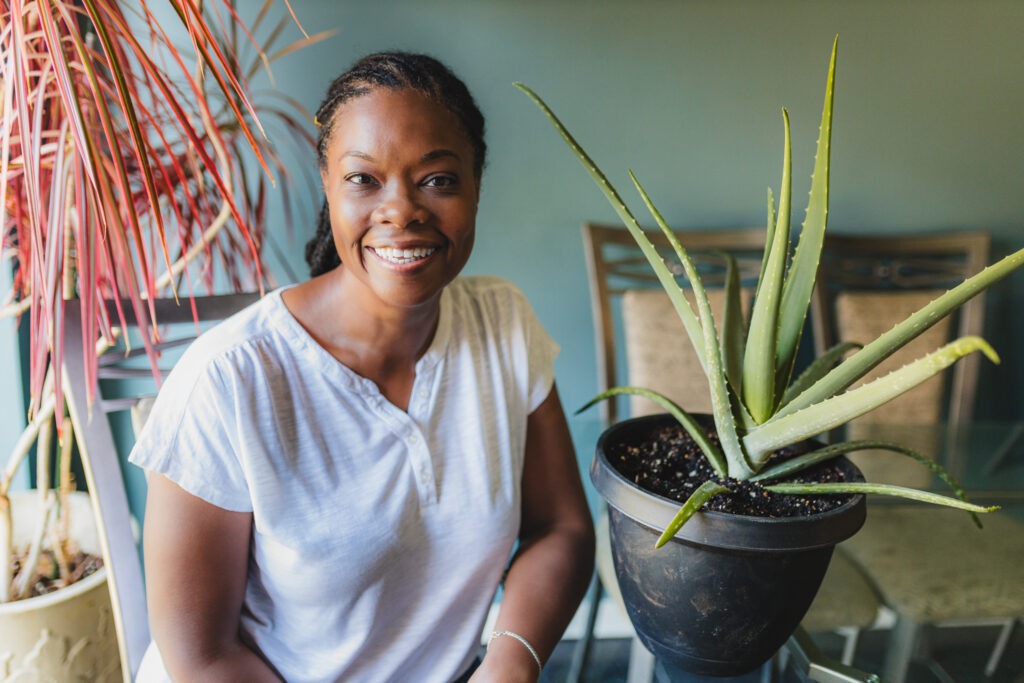
Coming out from under a “blanket of pain”
One of Natasha’s most prized possessions includes a hearty aloe vera plant given to her by a fellow patient at Hamilton Health Sciences (HHS) Michael G. DeGroote Pain Clinic.
The Mississauga resident attended the clinic’s Intensive Chronic Pain Management Program last fall, and calls the experience life-changing. She’s sharing her story for Pain Awareness Month in September to help raise awareness of chronic pain, pain management and the clinic.
The five-week program that Natasha participated in was offered in a small group format, and on the last day one of the other patients brought everyone a tiny aloe vera plant as a gift, to celebrate their time together and what they accomplished along the way.
“I’ve had to re-pot mine at least twice since then because it has grown so much,” says Natasha, who draws inspiration from the thriving, spiky-pronged plant. “I admire it every day and take good care of it because it reminds me of my time at the clinic, and my journey in managing chronic pain.”
Located at HHS McMaster University Medical Centre, the Michael G. DeGroote Pain Clinic is the largest academic, university-affiliated pain clinic in Canada, and has been operating for 50 years. Services alternate between virtual and in-person, depending on patients’ needs and preferences.
Managing chronic pain
Looking back on her life, Natasha has experienced many years of pain for a variety of reasons including injuries from a fall, debilitating migraines, endometriosis, a car accident and fibromyalgia. It was the accident that led to the fibromyalgia diagnosis, and eventually the referral to the pain clinic.
“My pain isn’t going away, but now I have strategies to manage it and live my best life.”
Fibromyalgia can cause widespread pain along with fatigue, headaches, sleep loss, and memory and mood issues. Symptoms can be triggered by trauma, such as an accident. While there’s no cure, certain medications can help manage pain, as can exercise and stress-reduction techniques.
Benefits of the Intensive Chronic Pain Management Program
This third-party funded program that Natasha participated in is available to patients through Veterans Affairs, Workers’ Safety and Insurance Board, and insurance companies for motor vehicle accidents. It’s offered in group format and includes fitness and education classes, tai chi, yoga, and sessions on breathing, relaxation and mindfulness. There are also sessions on understanding pain management, such as the science of pain, the importance of pacing yourself in daily activities, self-talk, communication, sleep, grief and loss.

Dr. Eugene Maida, medical director of the Michael G. DeGroote Pain Clinic.
“Group participation gives our patients an opportunity share their experiences with others living with similar chronic pain concerns,” says Dr. Eugene Maida, the clinic’s medical director. “They realize that they’re not alone.”
The team supporting patients includes a physician/pain specialist, psychologist, psychometrist (someone who administers and scores neuropsychological, psychological, and other tests), a physiotherapist, pharmacist, occupational therapists, social worker and dietitian, all with expertise in chronic pain management. Patients can meet one-on-one with these health care professionals, as needed.
“Having offered this interdisciplinary approach for 50 years really speaks to the breadth of our clinic, and the wide-ranging support we can offer our patients,” says Maida.
Finding hope in a safe space
In November 2018, Natasha was driving from an appointment when her vehicle was side-swiped at a traffic light. Right after the crash, her only injuries appeared to be soft tissue damage, but a few days later she began experiencing severe, unrelenting pain.
“That space felt so safe.”
“It was like I was wrapped in a blanket of pain,” says Natasha, adding that flare-ups continued to target her legs, arms, shoulders and back. “Regardless of the area, it always felt like my bones were being crushed from the inside. It felt like they were imploding.” Migraines were also frequent and extreme.
Her symptoms led to the fibromyalgia diagnosis, and a friend suggested she try a pain clinic.
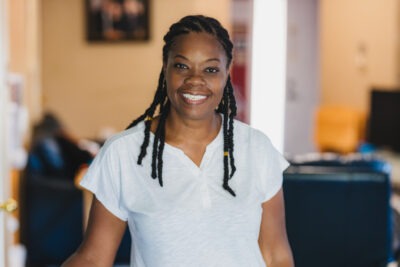
Natasha’s quality of life improved when she learned strategies to manage her pain.
“The pain clinic sessions help you understand that your pain won’t go away, because it’s a chronic condition, but that it can be managed,” says Natasha, who attended in-person daytime sessions.
“That space felt so safe,” she adds. “I was surrounded by people who understood chronic pain and didn’t judge, because it’s often an invisible illness. As patients we can look fine on the outside, but the truth is that we’re really struggling to cope. My family and friends are very supportive, but they’re able-bodied and don’t live with chronic pain. At the clinic, I didn’t have to explain myself or what I was experiencing to anyone. They already knew exactly what I was living with.”
As well as learning techniques for managing chronic pain, Natasha also worked through the grieving process of giving up the midwifery career that she had worked so hard to build.
“I had gone back to school at age 37 to train as a registered midwife. I worked really hard to achieve that dream, and was only able to work in that profession for two-and-a-half years before I had to stop because I was injured. I grieved because I really missed my career that I had worked so hard to achieve.”
The clinic team helped her process this grief and loss, and also gave her hope for a new, manageable future. “I am hopeful that someday I will be able to find a niche in my profession for me, even with my diagnosis.”
Through the program’s group format, Natasha made friends with fellow patients who could relate to her struggles.
“I’m still in contact with several people I met through the pain clinic, including the woman who gave me the aloe vera plant” says Natasha.
“To this day, that plant reminds me of the clinic and how it helped me, as well as the friends I made there. My pain isn’t going away, but now I have strategies to manage it and live my best life.”

